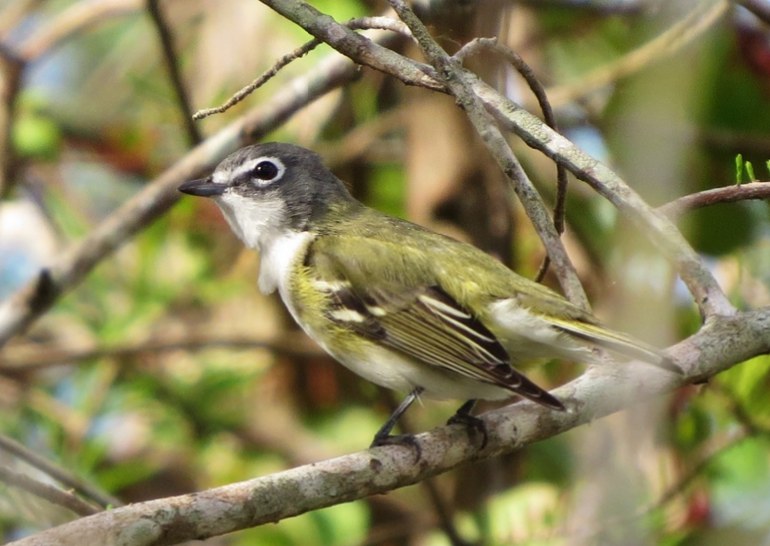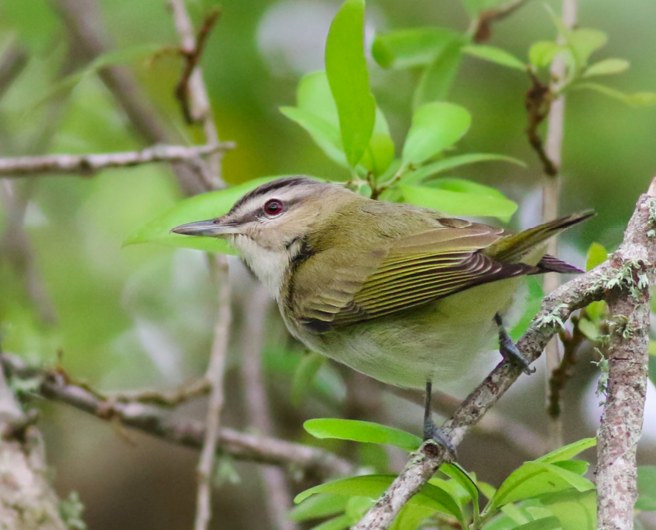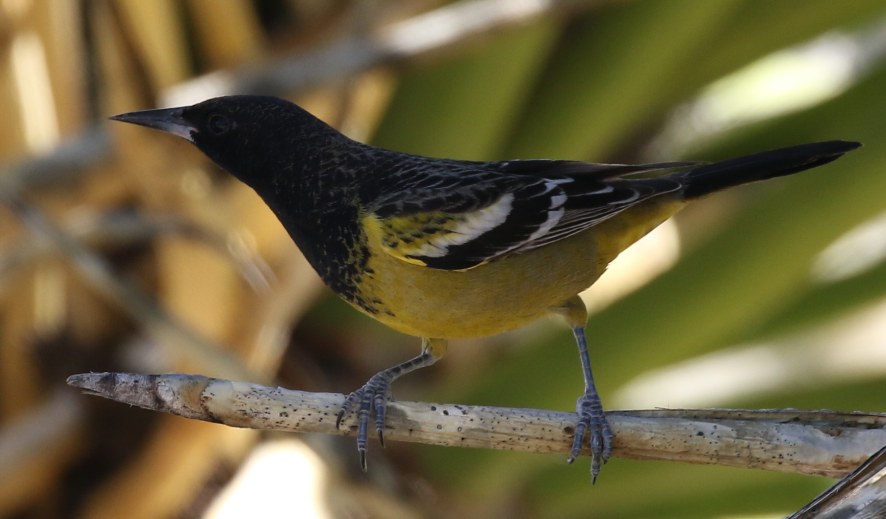Continental Summary
Light to moderate flights along the Pacific Coast and in portions of the Desert Southwest highlighted the period in the West, while light to moderate flights reached their greatest extents on Tuesday night in the East.
Curious what birds will move next? Check out our forecast.
Need a review of our definitions for regions, species on the move, and migration amounts? Please visit this link.
Quick Links to Regions
Upper Midwest and Northeast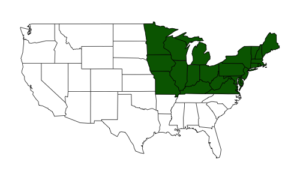 |
Gulf Coast and Southeast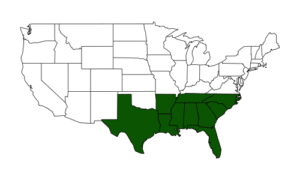 |
Great Plains |
West |
Upper Midwest and Northeast
Aside from localized light movements in Virginia to kick off the weekend, migration was largely absent or highly localized for the first nights of the forecast period as cool air, frozen precipitation, and northerly flow came into the region. By Monday night, light to moderate flights occurred in the Upper Midwest where more favorable and warmer conditions returned. And by Tuesday night these conditions, the associated light to moderate flights, expanded to include most of the region in the action. However, a strong frontal boundary, and some nasty weather associated with it, began to shut down migration in the western reaches of the region by Wednesday, continuing to do so for almost the whole region by Thursday night. Migration to the east of this frontal passage continued to be light to moderate.
Top Movers
Increasing
| Species | Increase from Last Week | % of Checklists Reporting |
|---|---|---|
| Osprey | 107% | 6.7 |
| Golden-crowned Kinglet | 66% | 7.2 |
| Great Egret | 227% | 2.2 |
| Chipping Sparrow | 81% | 3.7 |
| Tree Swallow | 37% | 13 |
| Eastern Phoebe | 34% | 17.5 |
| Double-crested Cormorant | 45% | 8 |
| Louisiana Waterthrush | 586% | 0.4 |
| Northern Rough-winged Swallow | 87% | 0.7 |
| Blue-gray Gnatcatcher | 4942% | 0.3 |
| Black Vulture | 54% | 5.1 |
| Blue-winged Teal | 33% | 4.4 |
| Northern Flicker | 29% | 16.6 |
| Fish Crow | 48% | 9.3 |
| Turkey Vulture | 16% | 26.5 |
| Brown Thrasher | 56% | 2 |
| Yellow-throated Warbler | 512% | 0.3 |
| Brown-headed Cowbird | 22% | 13.3 |
| Pine Warbler | 59% | 3.1 |
| Great Blue Heron | 17% | 11.8 |
| Snowy Egret | 808% | 0.2 |
| Wilson's Snipe | 30% | 2.4 |
| Blue-headed Vireo | 133% | 0.2 |
| Laughing Gull | 39% | 1.1 |
Decreasing
| Species | Decrease from Last Week | % of Checklists Reporting |
|---|---|---|
| Tundra Swan | -49% | 1.3 |
| Sandhill Crane | -31% | 4.3 |
| Northern Pintail | -33% | 2.2 |
| American Woodcock | -31% | 1.9 |
| Redhead | -34% | 3.5 |
| Ruddy Duck | -27% | 3.4 |
| Greater White-fronted Goose | -41% | 0.7 |
| Gadwall | -26% | 6.8 |
| Common Goldeneye | -25% | 3.6 |
| Canvasback | -35% | 1.7 |
| American Wigeon | -22% | 5 |
| Killdeer | -11% | 15.9 |
| Barrow's Goldeneye | -88% | 0 |
| American Bittern | -91% | 0 |
| American Tree Sparrow | -12% | 8.3 |
| Ross's Goose | -46% | 0.2 |
| White-winged Scoter | -30% | 0.7 |
| Horned Lark | -15% | 2.8 |
| Snow Goose | -12% | 1.6 |
| Greater Scaup | -21% | 2 |
| Northern Shoveler | -20% | 7.9 |
Gulf Coast and Southeast
The effects of a strong frontal passage kept things quiet for the first days of the forecast period. Some signs of life returned to the migration system by Monday night, when light to moderate flights occurred in Texas and Louisiana. These flights became more widespread on Tuesday night, with pockets of light and moderate migration across the region. Although the flights continued, albeit to a lesser geographic extent, on Wednesday night, Thursday saw the passage of another frontal boundary; migration shut down in its wake. Note, however, that southern Florida was still experiencing a locally moderate flight on Thursday night, to the south and east of the advancing frontal boundary’s precipitation.
Top Movers
Increasing
| Species | Increase from Last Week | % of Checklists Reporting |
|---|---|---|
| Red-eyed Vireo | 292% | 1.5 |
| Louisiana Waterthrush | 76% | 2.6 |
| Hooded Warbler | 145% | 1.2 |
| Yellow-throated Vireo | 51% | 2.3 |
| Prothonotary Warbler | 111% | 1.2 |
| Chimney Swift | 62% | 1.7 |
| Ruby-throated Hummingbird | 31% | 3.8 |
| Black-chinned Hummingbird | 51% | 2 |
| Northern Rough-winged Swallow | 17% | 7.3 |
| Pectoral Sandpiper | 64% | 1.6 |
| Black-throated Green Warbler | 124% | 1.1 |
| Worm-eating Warbler | 494% | 0.5 |
| Black-necked Stilt | 25% | 6.2 |
| Black-and-white Warbler | 20% | 8.4 |
| Eastern Kingbird | 211% | 0.5 |
| Blue-gray Gnatcatcher | 16% | 16.2 |
| Broad-winged Hawk | 48% | 1.3 |
| Tree Swallow | 15% | 15.3 |
| Chuck-will's-widow | 49% | 1.2 |
| Baird's Sandpiper | 174% | 0.5 |
| Scissor-tailed Flycatcher | 37% | 1.9 |
| Black Skimmer | 32% | 2.6 |
| Least Tern | 85% | 0.5 |
| Lesser Nighthawk | -1141% | 0.2 |
| Bank Swallow | 111% | 0.3 |
Decreasing
| Species | Decrease from Last Week | % of Checklists Reporting |
|---|---|---|
| Ring-necked Duck | -36% | 2.1 |
| American Kestrel | -29% | 7.4 |
| Eastern Phoebe | -19% | 14 |
| Orange-crowned Warbler | -30% | 4.2 |
| Cinnamon Teal | -49% | 0.6 |
| White-crowned Sparrow | -30% | 2.3 |
| Song Sparrow | -15% | 9.5 |
| Horned Lark | -43% | 0.6 |
| Green-winged Teal | -24% | 3.4 |
| Yellow-rumped Warbler | -11% | 31.4 |
| Field Sparrow | -19% | 4.7 |
| Killdeer | -17% | 12.7 |
| Gadwall | -18% | 4.4 |
| Northern Flicker | -14% | 8.5 |

Blue-gray Gnatcatcher. Patrick Van Thull/Macaulay Library. 25 Mar 2016. eBird S28535313, ML 26139191
Great Plains
A mostly quiet week, decidedly more like winter than like spring, saw little movement in the region on radar. Light migration was the highest intensity movement for the period, with such movements in the northern and central Plains on Sunday night and the central and southern Plains on Monday and Tuesday nights. Other than highly localized light flights outside of these movements, the region’s migration was largely stalled by the late season cold.
Top Movers
Increasing
| Species | Increase from Last Week | % of Checklists Reporting |
|---|---|---|
| Turkey Vulture | 45% | 27.3 |
| Great Egret | 553% | 2.3 |
| Cinnamon Teal | 711% | 1.9 |
| Common Loon | 142% | 3.2 |
| Herring Gull | 93% | 4.1 |
| Ruddy Duck | 31% | 13.2 |
| Purple Martin | 42% | 2.9 |
| Common Grackle | 19% | 27.4 |
| Blue-winged Teal | 21% | 15.6 |
| American Pipit | 74% | 2.2 |
| American Golden-Plover | 59% | 1.4 |
| Tree Swallow | 28% | 5.3 |
| Least Sandpiper | 48% | 1.6 |
| Vesper Sparrow | 40% | 2.1 |
| House Finch | 20% | 20.8 |
| Snowy Plover | 76% | 0.9 |
| Eared Grebe | 62% | 1.1 |
| Cedar Waxwing | 16% | 11.8 |
| Lesser Scaup | 16% | 14.9 |
| Western Meadowlark | 25% | 17.7 |
| Blue-gray Gnatcatcher | 85% | 0.6 |
| Tundra Swan | 33% | 2 |
Decreasing
| Species | Decrease from Last Week | % of Checklists Reporting |
|---|---|---|
| Lincoln's Sparrow | -57% | 0.7 |
| American Goldfinch | -26% | 11.9 |
| Sandhill Crane | -30% | 5.4 |
| Blue Jay | -12% | 22.9 |
| Marsh Wren | -53% | 0.5 |
| Hermit Thrush | -61% | 0.3 |
| Belted Kingfisher | -23% | 3.9 |
| Harris's Sparrow | -20% | 10.6 |
| Fish Crow | -42% | 2 |
| Pine Warbler | -49% | 0.3 |
| Eastern Phoebe | -21% | 14.9 |
| Song Sparrow | -16% | 15.6 |
| Common Redpoll | -23% | 1.8 |
| American Woodcock | -19% | 0.3 |
| Say's Phoebe | -77% | 0 |
| Ferruginous Hawk | -48% | 0.2 |
| American Crow | -4% | 31 |
West
Light and moderate flights from the Pacific Northwest south and east through the Desert Southwest highlighted the weekend’s migration scene. Scattered precipitation in the western and northern portions of the region then proceeded to shut down most movements in those areas, while locally light flights continued in the Desert Southwest to begin the work week. The mountainous portions of the region were generally cool this week, favoring highly localized light movements if they occurred. As disturbances responsible for precipitation earlier in the period moved east, slightly more favorable conditions returned to portions of the Pacific Coast, where light to moderate migration returned locally to end the period.
Top Movers
Increasing
| Species | Increase from Last Week | % of Checklists Reporting |
|---|---|---|
| Lucy's Warbler | 91% | 4.3 |
| Violet-green Swallow | 40% | 8 |
| Hooded Oriole | 53% | 3.9 |
| Bell's Vireo | 62% | 2.5 |
| Pacific-slope Flycatcher | 48% | 2.5 |
| Turkey Vulture | 22% | 21.9 |
| Tree Swallow | 23% | 13.8 |
| Barn Swallow | 37% | 4.2 |
| Black-chinned Hummingbird | 59% | 1.9 |
| Wilson's Warbler | 50% | 2 |
| White-winged Dove | 40% | 4.6 |
| House Wren | 27% | 5.1 |
| Yellow Warbler | 61% | 1.4 |
| Orange-crowned Warbler | 25% | 8.2 |
| Purple Finch | 27% | 3.7 |
| Painted Redstart | 78% | 1.1 |
| Warbling Vireo | 50% | 1.3 |
| Osprey | 26% | 4.1 |
| Rufous Hummingbird | 20% | 4.6 |
| Northern Rough-winged Swallow | 28% | 7.9 |
| Scott's Oriole | 139% | 0.4 |
| Mourning Dove | 10% | 29.8 |
Decreasing
| Species | Decrease from Last Week | % of Checklists Reporting |
|---|---|---|
| Brown Pelican | -49% | 1.3 |
| Semipalmated Plover | -78% | 0.1 |
| Brant | -39% | 1 |
| Heermann's Gull | -53% | 0.4 |
| Brandt's Cormorant | -37% | 1.4 |
| Ruddy Turnstone | -77% | 0.1 |
| Red-breasted Merganser | -25% | 2.3 |
| Ring-billed Gull | -19% | 7.4 |
| Elegant Tern | -60% | 0.2 |
| Willet | -25% | 2.4 |
| Surf Scoter | -27% | 3.4 |
| Red-throated Loon | -36% | 0.9 |
| Marbled Godwit | -25% | 2.1 |
| Spotted Sandpiper | -25% | 1.3 |
| Black-bellied Plover | -28% | 1.1 |
| Royal Tern | -31% | 0.5 |
| Least Sandpiper | -22% | 2.1 |
| Common Loon | -28% | 1.5 |
| Long-billed Curlew | -28% | 1.4 |
| Sanderling | -36% | 0.8 |
| Rhinoceros Auklet | -43% | 0.2 |
–––––––––––––––––––––––––––––––––––
Farnsworth and Van Doren

